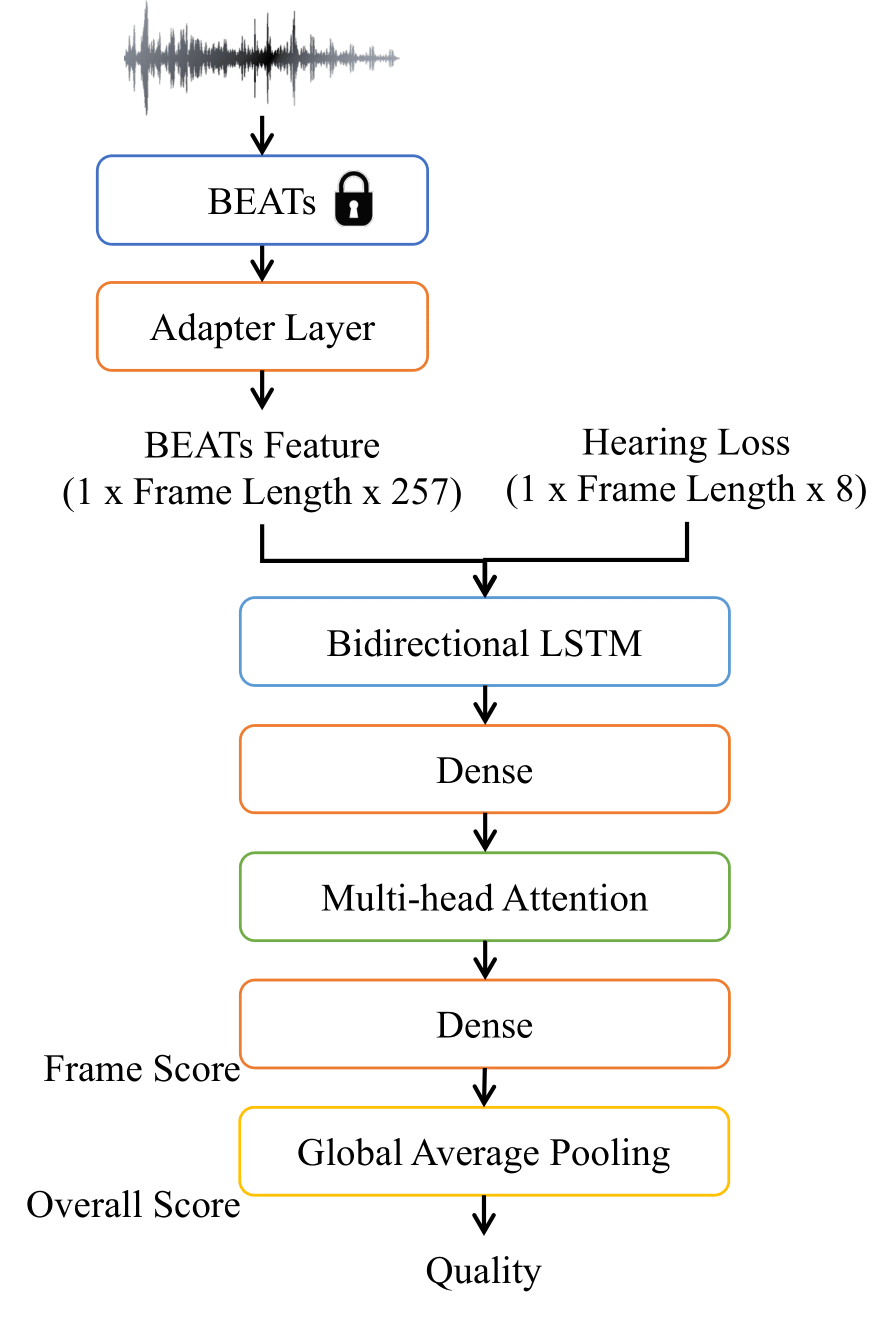HAAQI-Net: A Non-intrusive Neural Music Audio Quality Assessment Model for Hearing Aids
This paper introduces HAAQI-Net, a non-intrusive deep learning model for music audio quality assessment tailored for hearing aid users. Unlike traditional methods like the Hearing Aid Audio Quality Index (HAAQI), which rely on intrusive comparisons to a reference signal, HAAQI-Net offers a more accessible and efficient alternative. Using a bidirectional Long Short-Term Memory (BLSTM) architecture with attention mechanisms and features from the pre-trained BEATs model, HAAQI-Net predicts HAAQI scores directly from music audio clips and hearing loss patterns. Results show HAAQI-Net's effectiveness, with predicted scores achieving a Linear Correlation Coefficient (LCC) of 0.9368, a Spearman's Rank Correlation Coefficient (SRCC) of 0.9486, and a Mean Squared Error (MSE) of 0.0064, reducing inference time from 62.52 seconds to 2.54 seconds. Although effective, feature extraction via the large BEATs model incurs computational overhead. To address this, a knowledge distillation strategy creates a student distillBEATs model, distilling information from the teacher BEATs model during HAAQI-Net training, reducing required parameters. The distilled HAAQI-Net maintains strong performance with an LCC of 0.9071, an SRCC of 0.9307, and an MSE of 0.0091, while reducing parameters by 75.85% and inference time by 96.46%. This reduction enhances HAAQI-Net's efficiency and scalability, making it viable for real-world music audio quality assessment in hearing aid settings. This work also opens avenues for further research into optimizing deep learning models for specific applications, contributing to audio signal processing and quality assessment by providing insights into developing efficient and accurate models for practical applications in hearing aid technology.
PDF Abstract

